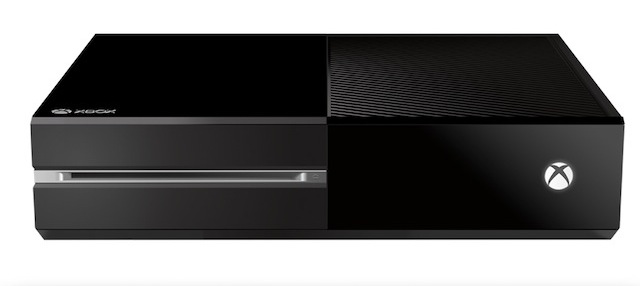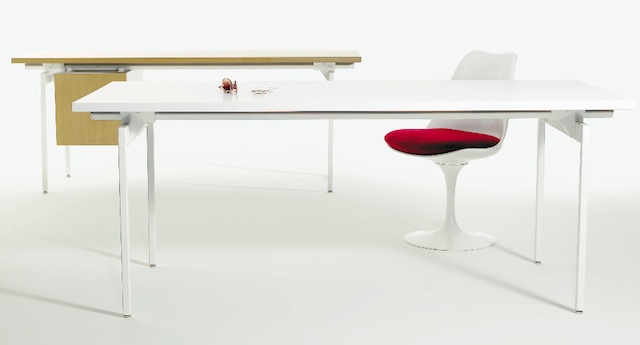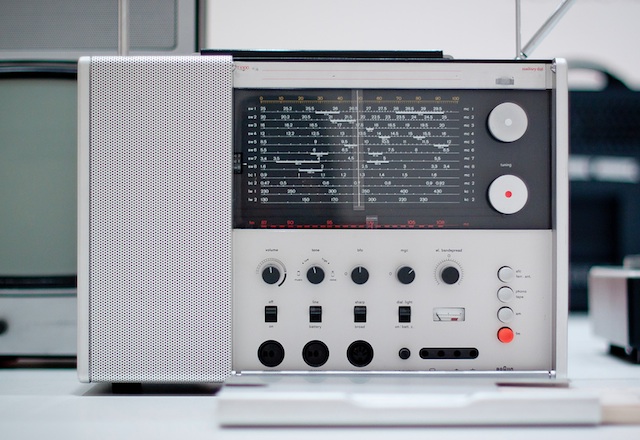When Microsoft announced their new console, the Xbox One, fans and detractors rushed to weigh in. The loudest gripes were over digital rights management that could spell the end to the first-sale doctrine for used games. Others were alarmed at how Microsoft were putting television features first and forgetting the games. But oddly, for a superficial culture such as our own, no one bothered to judge a book by its cover. Er, or a videogame console by its casing.
“It looks like an old slide projector,” says Kate Carmody, the Curatorial Assistant for the Department of Architecture and Design at The Museum of Modern Art in New York. “It’s like old equipment that you have [to understand] to be able to use. It’s like something out of Mad Men,” she added with a big laugh.
Carmody knows a thing or two about what games look like. Over the past year, Carmody has been busily acquiring games for MoMA’s Applied Design installation. But her interest speaks to a larger question, and one that every designer faces: Exactly what does the design of Microsoft’s new box tell us?

It’s a question of no small importance. Public perception will ultimately decide who buys the next Xbox. So far, no one knows exactly what to make of it. It’s a VCR, a set-top box, high-end stereo equipment, just another component for the AV rack. From the looks of it, it’s substantial impedimenta. Yet it’s said to ostensibly disappear, withdrawing into the shaded recesses of your home entertainment system. The messages seem conflated.
Carmody would be the first to tell you that it’s missing the point to focus on the design of a gaming platform rather than the games that run on it. Yet we live in a materialistic society and define ourselves through the things we own. The game console has as much to say culturally as Pac-Man, Tetris, The Sims, or any of the forty plus games the Museum will eventually put on display. The look and feel of a console communicates an ethos in the same way as any other object, from the first iMacs to Bauhaus chairs.
When Carmody gives the Xbox One a closer eye, she sees a console that’s growing up, targeting savvy dads instead of high school sophomores. This evolution from the man cave to the family room has been gradual. The original Xbox, released in 2001, was branded with a large garish X on top, and looked “like something that descended from a spaceship,” she says. “It screams teenage boy!”
Then, in 2005, the Xbox 360 grew some peach fuzz, blending bright fluorescent colors and Apple’s playfulness with the muscular necessity of a desktop computer. But it still looked childish. The Xbox One, however, with its hard edges, brushed aluminum, and sleek chrome, is an altogether harsher and more serious machine. It’s not for the playroom; it’s for den.

Microsoft wants us to know this Xbox is serious. But as important as it is to know who Xbox One is for, the design can also tell us who’s left out.
I reached out to Masamichi Udagawa of Antenna Design, the Manhattan-based design studio that creates gorgeous, minimal (and reasonably priced!) office furniture. He wasn’t enamored with the Xbox design, instead pointing to his desks, which have an airy quality that make them almost appear to float. “We want people to feel light and free so they become dynamic. Our designs are simple to look at, and that translates to the overall lightness,” he says. “Most office furniture looks heavy. It’s rather stifling.”
You could say the same of the burly Xbox One, which looks like it takes two people just to lift it. In other words, don’t hold your breath for a featherweight, iPhone-like gaming experience. Expect to sink into the sofa for evenings at a time and be consumed by this beast.
And what class of consumer does the new Xbox appeal to? Carmody’s immediate thought is: professional adult men. “It’s very gendered,” she says, elaborating on how the machine’s retro style, which is a throwback to electronics from the ‘70s and ‘80s, is aimed at a male demographic. It seems the marketing department is out of sync with the Xbox One design team, as the company surely hopes to woo females, given the number of women on stage at the presentation.

Yet the design lacks the elegance of today’s universal devices like iPhones, opting for retro-professional. “It’s right out of the 1970s,” Carmody says, “right from the hi-fi design of Dieter Rams,” referring to Braun’s chief designer, whose iconic transistor radios, record players, and coffee makers inspired a generation of designers, including Apple’s design guru Jony Ive. “Even the fan on it, that vertical slat, very Dieter Rams,” she says.
In the design world, Rams’ products are referred to as “cult objects.” And by sticking to his design principles, the Xbox One carries the same light. The term itself was coined by Deyan Sudjic, the director of Design Museum in London, and it’s summed up nicely in the book E.W. Godwin: Aesthetic Movement Architect and Designer:
businesslike, professional, serious, and even masculine. Such an object was mass produced, or at least its shape and finish suggested that it was produced by machine, giving the impression of at least the existence of limitless numbers of identical objects, and hinting at an ideal universal form that is independent of its creator.
With its clean assembly-line polish, the Xbox One falls squarely into the category of “cult objects.” Carmody explains how these items have a near-religious significance. “You only need one of these things. You’re not collecting,” she says. The subtext is if you buy this one shining object, all of your ailments in the living room will be healed. You can play Call of Duty, watch Lebron James shoot a fade away, or pop in a movie without ever having to switch from the game console to the TV to the Blu-Ray player. “It’s an appeal to the rational,” she tells me.
No wonder they call it the One.
Kate Carmody is a Curatorial Assistant in the Department of Architecture and Design at MoMA, where she works with Paola Antonelli on the video game acquisitions.
The quote from E.W. Godwin: Aesthetic Movement Architect and Designer was researched and prepared by Juluet Kinchin.
Dieter Rams radio via Kowitz.
